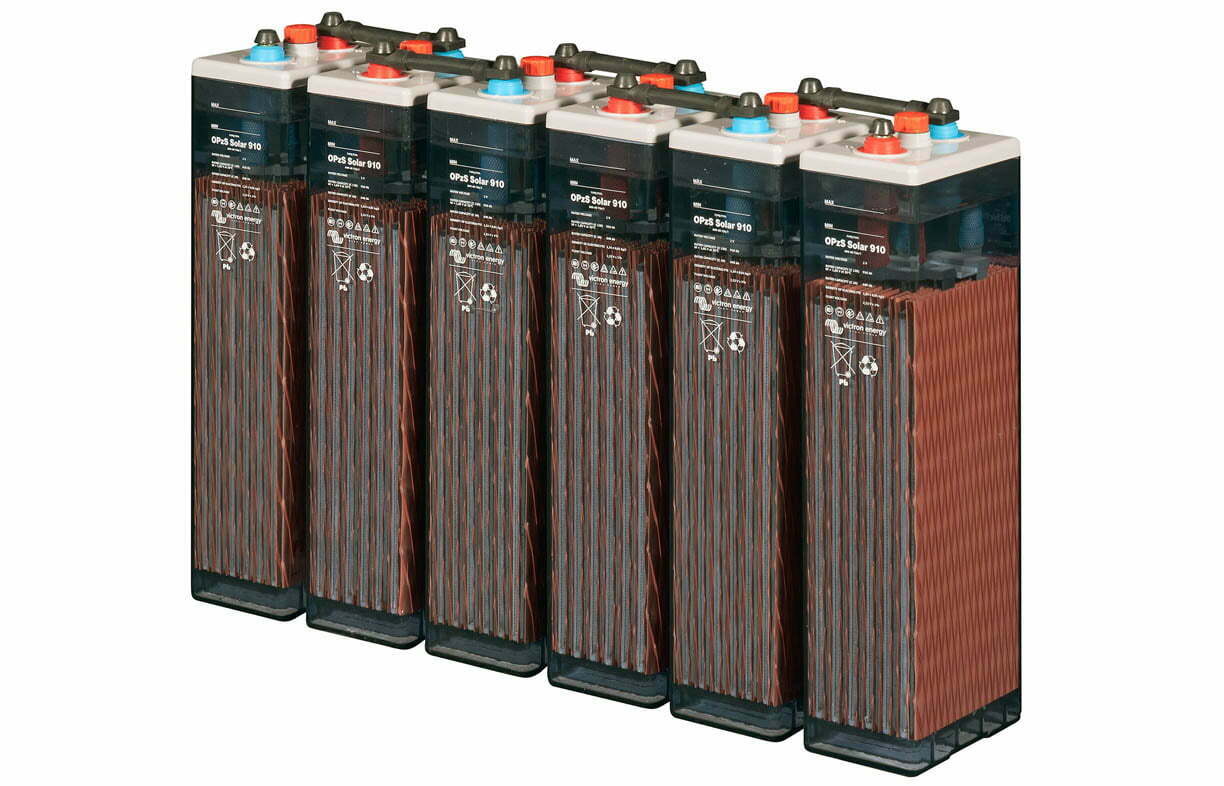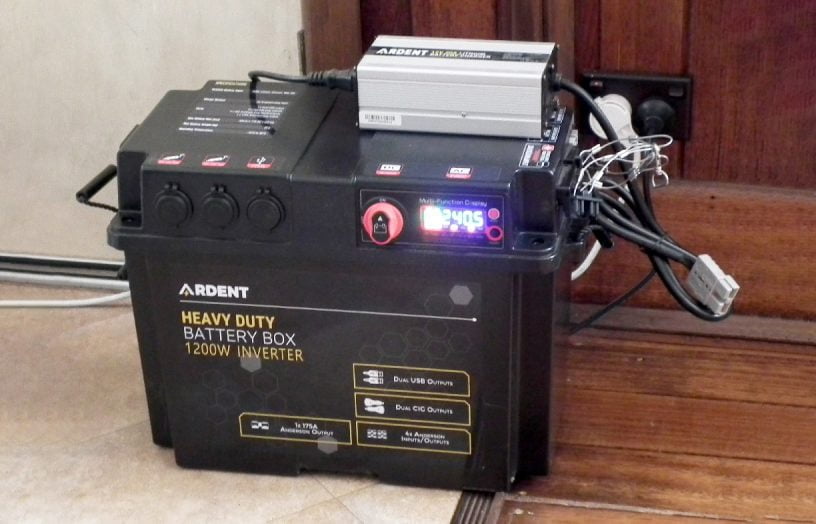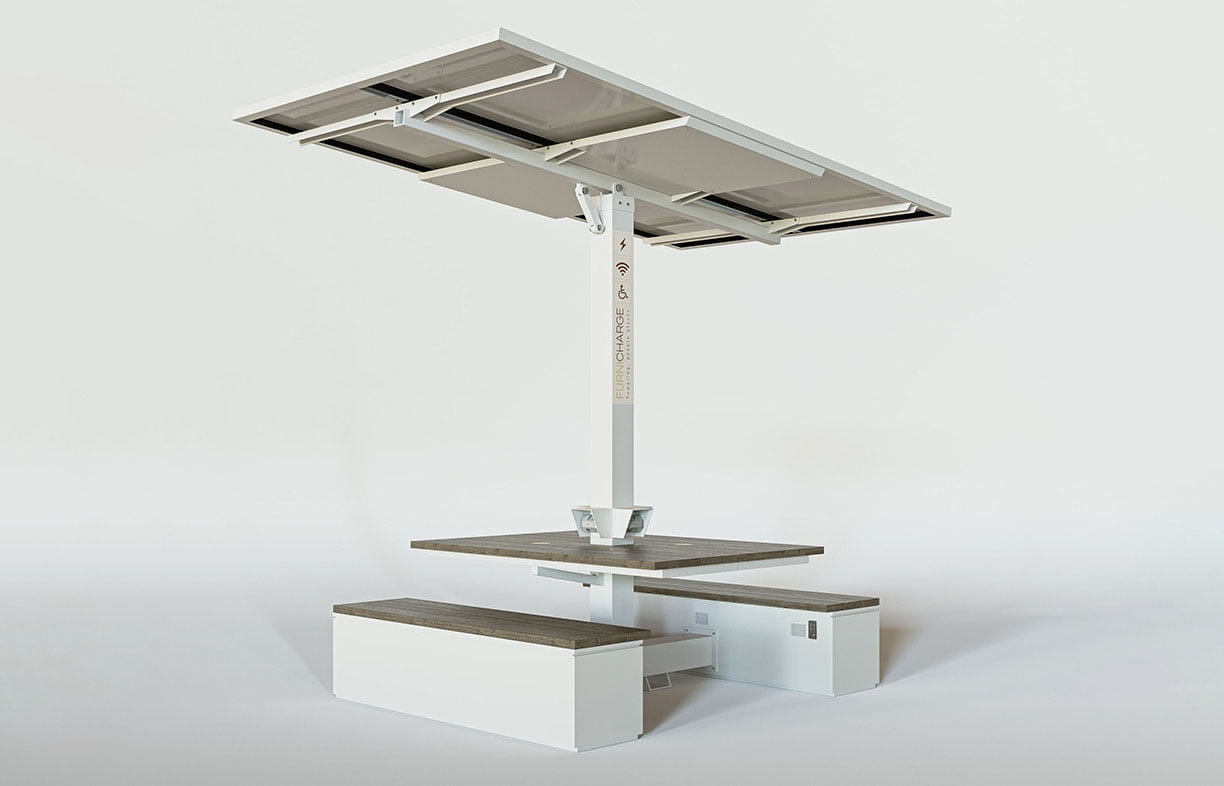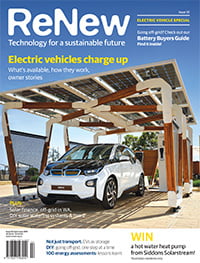Get the right energy storage: A battery buyers guide

The battery bank in a stand-alone or backup power system can make or break the system. Lance Turner examines what to look for in a battery bank and how to get the right battery for your needs.
As more people look to go off-grid due to the ever-increasing cost of electricity bills and the unreliability of the grid in some areas, the market for energy storage systems is set to expand massively in the next few years. That’s not to say there aren’t options available already—there are plenty, for both off-grid and on-grid use.
There are two main approaches to energy storage: you can buy the required number of individual batteries or cells and have them installed and connected together on-site, or you can buy an integrated ‘storage system in a box’, containing batteries, safety equipment such as fuses and disconnects, and possibly a charge controller or other equipment.
As we looked at integrated storage systems in ReNew 128, this guide looks mainly at the first of these options: buying batteries or cells for assembly into a large battery bank. We also don’t cover batteries for electric vehicles (EVs); see our All About EVs article on p. 38, for a discussion of batteries for EVs.
Battery selection is critical
Arguably the most important part of any renewable energy system involving energy storage is the battery bank. All other parts of a system can be upgraded or added to quite easily, but if you select too small a battery or one not suited to your needs then your system performance, and the battery’s usable life, will suffer. Unfortunately, the battery is the component most likely to be specified incorrectly, either due to a lack of understanding of how batteries perform, or budgetary constraints—the battery bank is now the most expensive single component in the average stand-alone power system (SAPS).
Battery requirements
Batteries are designed for specific applications. In this article, we look at batteries suitable for use in renewable energy systems, either off-grid, in stand-alone power systems (SAPS), or on-grid, in a grid-connected system with storage for either load shifting or backup power.
Over time, and with changes in technology, the requirements for domestic energy storage systems have changed quite considerably. Once common, 12 volt DC systems are now mainly found in caravan and camping situations, though small SAPS systems may still run at this voltage.
Current homes instead usually run AC-based systems. They have 24 or 48 volt (or even 120 volt) DC power systems with inverters to convert the power to 240 volts AC, and use efficient AC appliances.
Such systems need large capacity battery storage to cope with the high surges required to start the motors in appliances such as water pumps and vacuum cleaners, and ensure long battery life through shallow discharge of the batteries. Generally speaking, the deeper a battery is regularly discharged, the shorter its lifespan will be.
Useful characteristics for batteries in renewable energy systems are:
- long life under a continual charge/discharge regime
- ability to withstand numerous deep discharges over the life of the battery (e.g. in winter when it may need to be discharged more deeply)
- low maintenance requirements
- high charging efficiency; some energy will be lost when the batteries are charged, but the lower this is, the better
ability to perform over a wide temperature range. - low self-discharge; all batteries slowly discharge themselves over time, but the lower this is, the better.
Common renewable energy system battery types
The most common chemistry used in household energy storage systems is still the lead-acid battery. These have been around for more than a century and work well provided that the appropriate size and type are selected, and they are used and maintained appropriately.
As demand for more advanced energy storage grows, there has been much focus recently on lithium-based batteries. For household energy systems this generally means lithium iron phosphate (often called LiFePO4 or even just LFP) chemistry, which has seen considerable advancements in the last few years, with a steady decrease in cost as the scale of manufacturing has increased.
Nickel-cadmium batteries were used for a period in stand-alone power systems. However, their high cost and relatively high toxicity means they have all but disappeared. A related but much safer chemistry is the nickel-iron battery.
Other battery types found in commercial systems, though generally not used in domestic-scale systems, include flow batteries, sodium-sulphur batteries and even flywheel batteries.
Lead-acid batteries
Lead-acid batteries consist of lead and lead-sulphate plates suspended in a sulphuric acid electrolyte. They are a reliable and well-understood chemistry that is relatively forgiving to mild overcharging, although over-discharging can impact lifespan considerably.
In years past, the most common type of lead-acid batteries in household power systems were flooded cell types. At the time, these offered the longest life and best value for money over their lifetime.
However, in more recent times there has been a trend towards prioritising lower maintenance requirements, resulting in an increasing number of systems being installed with sealed lead-acid battery banks. With these, you no longer need to check cell electrolyte levels, and the corrosion by acid that occurs with flooded cells is virtually eliminated.
Sealed lead-acid batteries come in two main designs—AGM (absorbent glass mat) and gel cell. Gel cells have their electrolyte as a gel to prevent spillage and stratification (where the acid density of the electrolyte varies from the bottom to the top of the cells), while AGM batteries have liquid electrolyte, like flooded-cell batteries, but it is absorbed into fibreglass separators between the cells to provide the same benefits as the gel type. Either type can usually be mounted in either an upright or sideways orientation.
Lithium batteries
While lead-acid chemistry is still the mainstay of the renewable energy storage industry, this is steadily changing, with other battery chemistries such as lithium potentially offering considerable advantages over lead-acid batteries.
Lithium iron phosphate (LiFePO4) batteries have higher storage densities (more energy can be stored in a battery of a given volume), greater power densities (smaller batteries can produce greater instantaneous power outputs), much better charging efficiency and longer lifespans than any lead-acid formats.
They can be more expensive to purchase initially, but this is rapidly changing as the push for lower cost batteries for electric vehicles as well as domestic energy storage systems has spurred on many manufacturers to reduce prices and increase availability.
In addition, due to the longer life and higher efficiency of lithium cells, and the fact that their capacity is not affected by discharge rate like lead-acid cells, enabling lower capacity banks to be used compared to lead-acid, lithium batteries are already a cost-effective option when total cost of ownership is considered. While lithium batteries are still a relatively small segment of the domestic energy storage market, this is set to change in the next few years.
Lithium batteries must have an effective battery management system (BMS). This enables each cell in the battery bank to be individually monitored when charging and discharging. Overcharged cells and cells discharged below the minimum voltage point can fail, so a good BMS is a must.
Buy ReNew 131 to read the full article which includes:
- other battery technologies
- battery specifications (capacity, battery formats, voltage, battery charging efficiency, battery life)
- sizing the battery bank for a stand-alone system
- maintenance
- battery sustainability
- safety and a home for your batteries
- battery bank do’s and don’ts
- secondhand batteries.
You can also download the full table of manufacturers, suppliers and their batteries.
This article was first published in Issue 131 (April-June 2015) of Renew magazine. Renew 131 has a focus on electric vehicles.
Related articles
 DIY
DIY
Deleting the genset
If you have the need for the occasional use of a generator, then why not replace it with a much cleaner battery backup system instead? Lance Turner explains how.
Read more Renewable grid
Renewable grid
Is a floating solar boom about to begin?
Rob McCann investigates the world of floating solar energy systems.
Read more Products
Products
Product profile: Portable solar recharge hubs
Providing device recharging for events or outdoor areas with no access to electricity can be difficult, but the Furnicharge Freedom Hub makes it simple.
Read more

